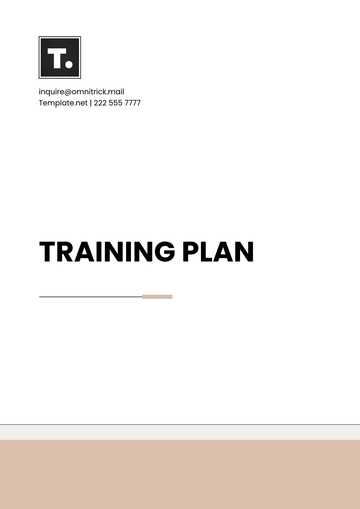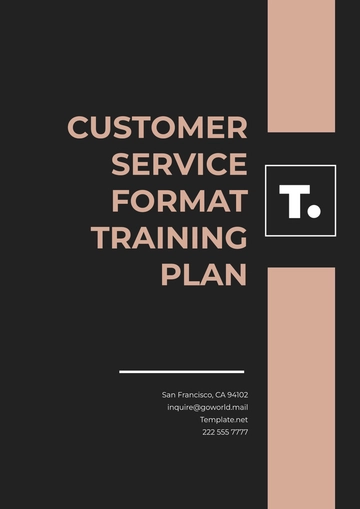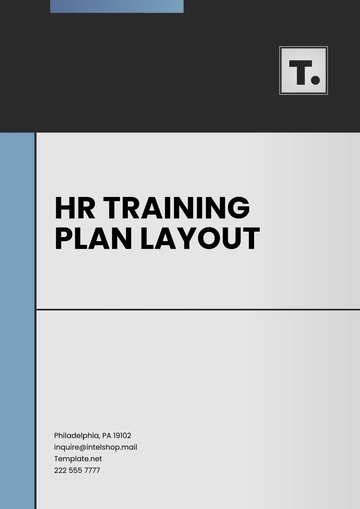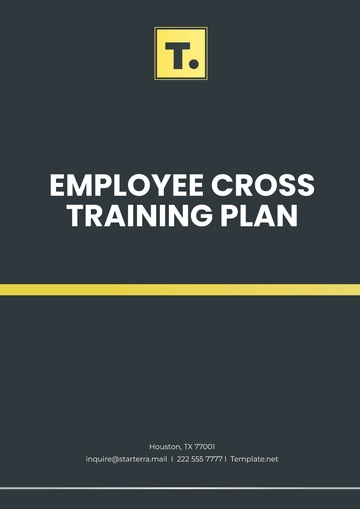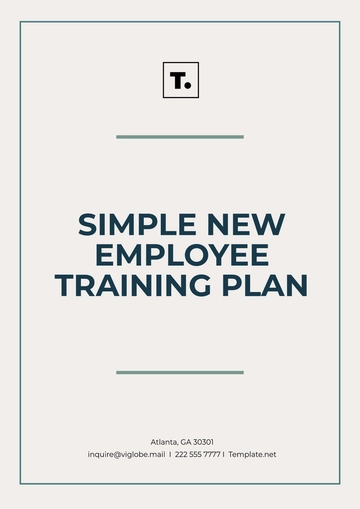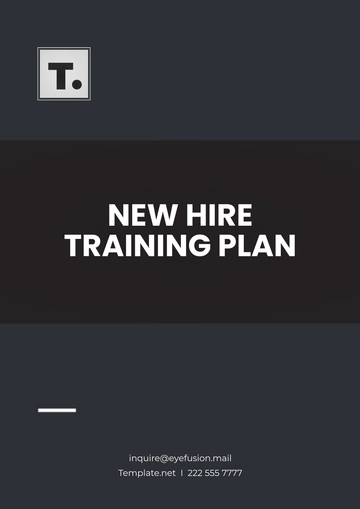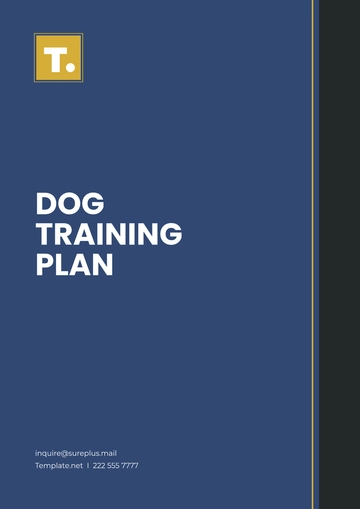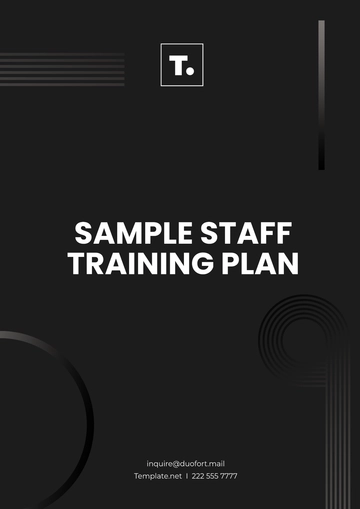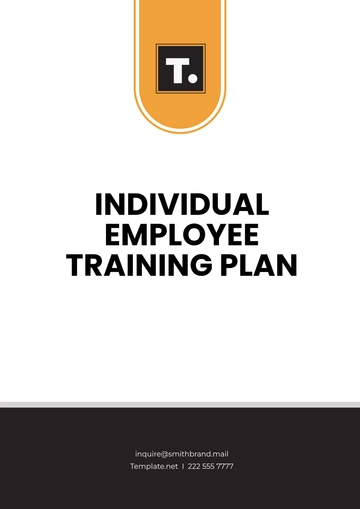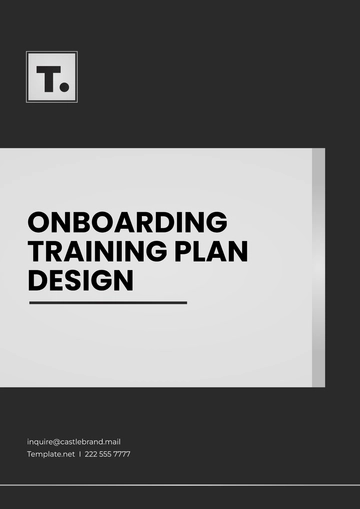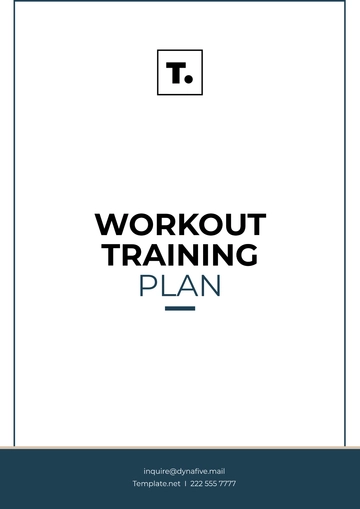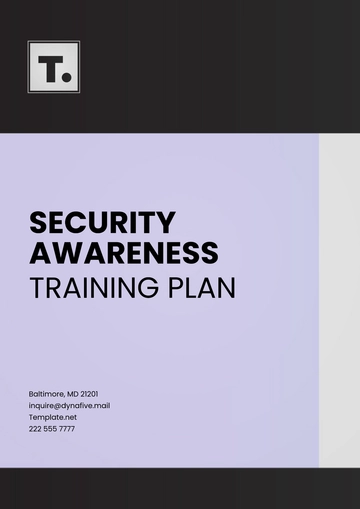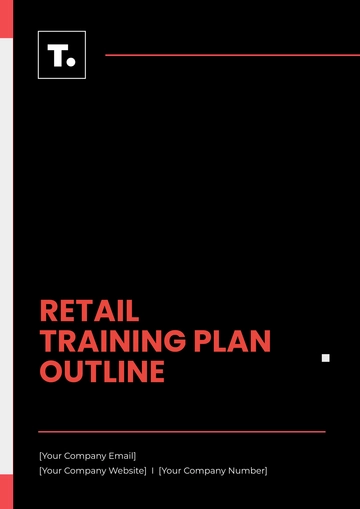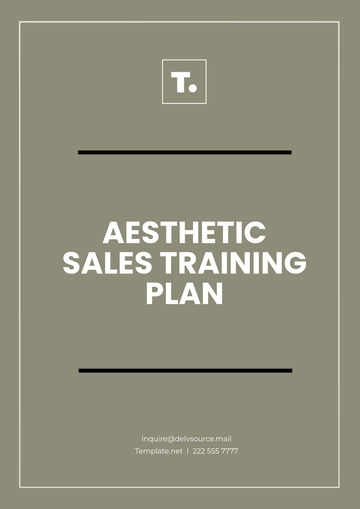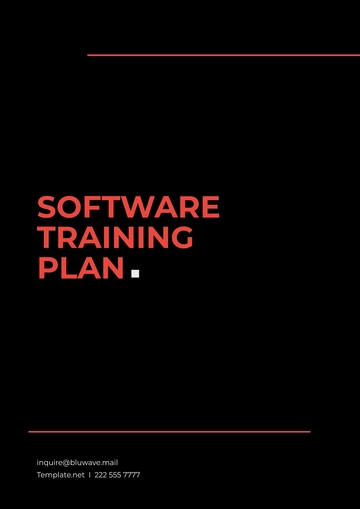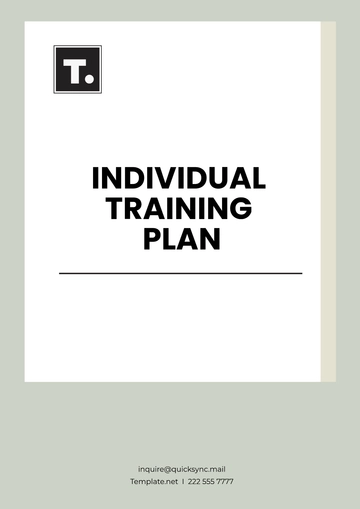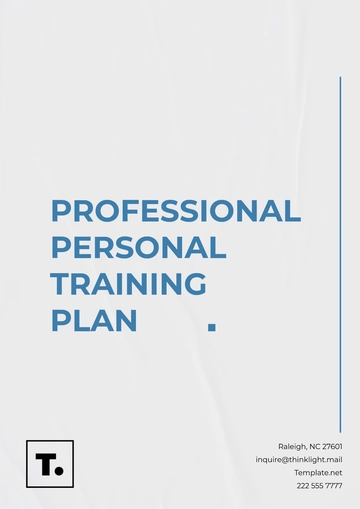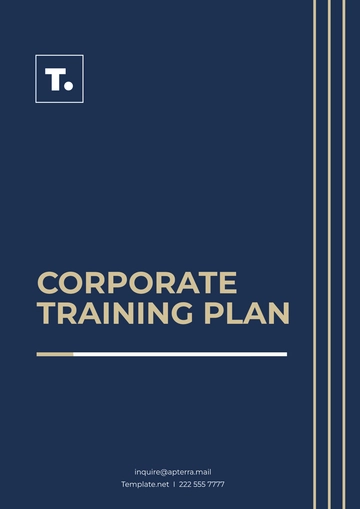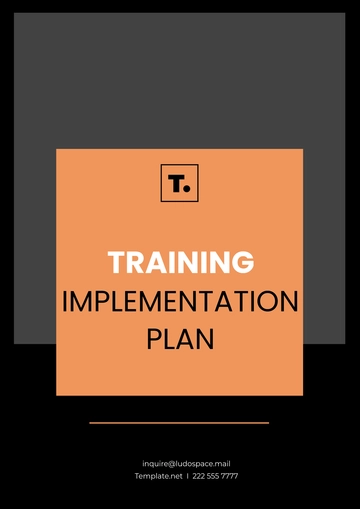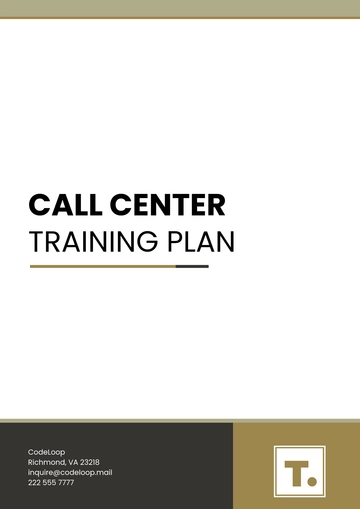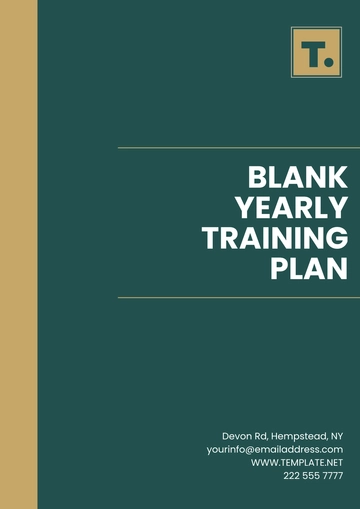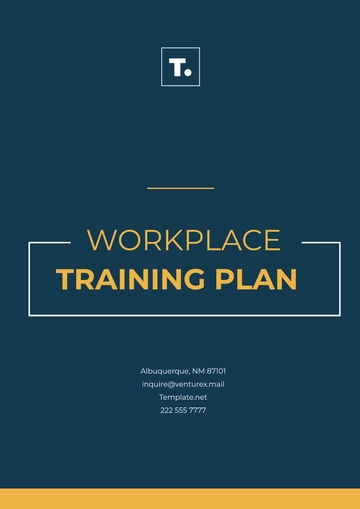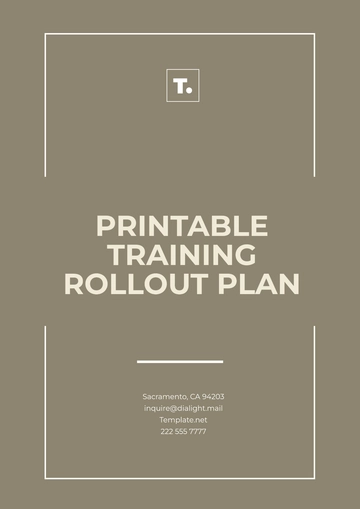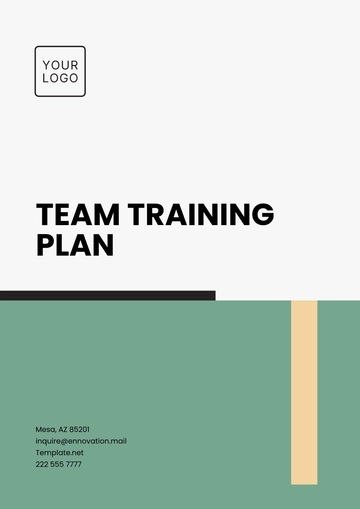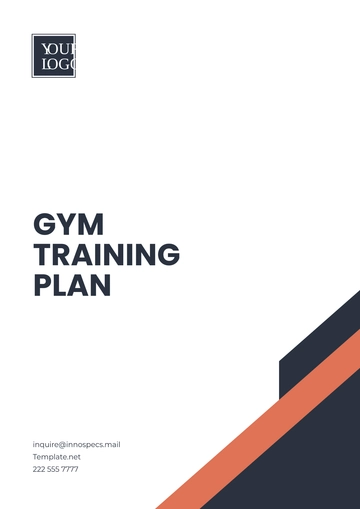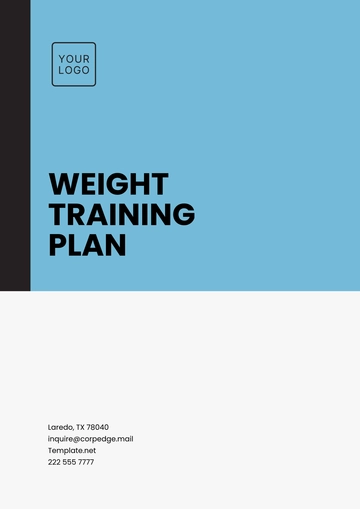Free Retail Training Plan Outline
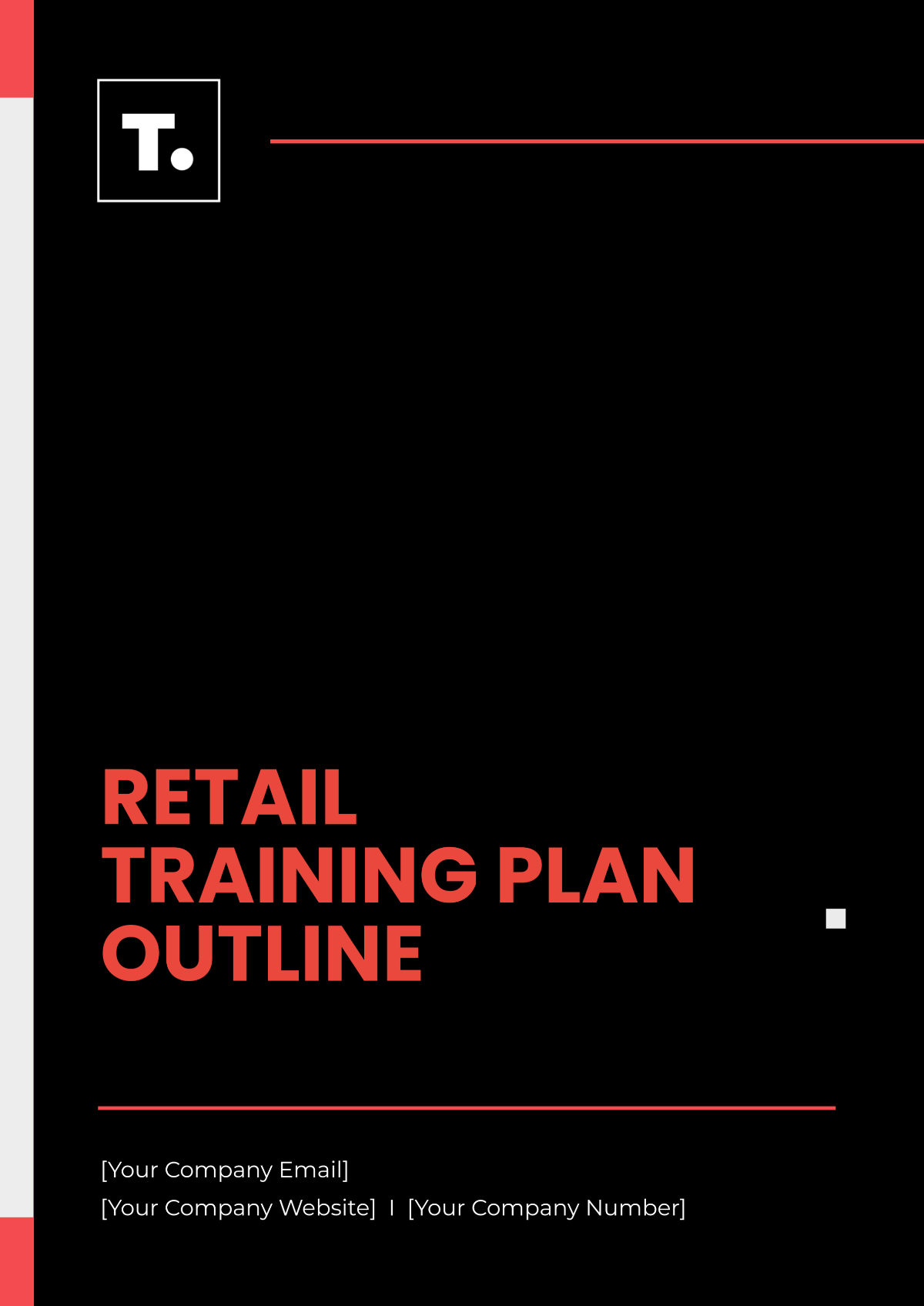
Written by: [YOUR NAME]
I. Introduction
Write a brief welcome message explaining the purpose of the training plan. Highlight its importance in helping employees gain in-depth product knowledge, improve customer service, and enhance sales skills. Ensure the tone is motivating and engaging.
Example:
Welcome to the Retail Product Knowledge Training Plan designed to empower employees of [YOUR COMPANY NAME] with comprehensive insights into our product offerings. This training initiative aims to elevate your understanding of our diverse range of products, fostering a culture of expertise, exceptional customer service, and increased sales performance.
II. Training Objectives
Clearly define the goals of the training program. Include specific objectives such as product knowledge, communication, customer service, and sales skills. Explain how these objectives align with the company’s goals.
Example:
Understanding Product Features and Benefits: By the conclusion of this training, participants will possess a nuanced comprehension of the features and benefits inherent in [YOUR COMPANY NAME] products, enabling them to effectively communicate these attributes to customers.
Effective Communication: Participants will refine their communication skills to adeptly convey product information, ensuring clarity, enthusiasm, and relevance in customer interactions.
Customer Service Excellence: This training will equip participants with the tools and techniques necessary to navigate customer inquiries and resolve product-related issues promptly and courteously, thereby enhancing customer satisfaction and loyalty.
Sales Skills Enhancement: Through targeted training, participants will develop the ability to leverage their product knowledge to identify upselling and cross-selling opportunities, ultimately driving revenue growth and contributing to [YOUR COMPANY NAME]'s success.
III. Training Schedule
Outline the training timeline, listing dates, times, and topics for each session. Ensure the schedule is practical, accommodating employees’ availability, and logically structured to build on previous sessions.
Example:
Training Session | Date | Time | Topic |
|---|---|---|---|
Orientation Session | May 1, 2050 | 9:00 AM - 10:30 AM | Introduction to the program and product categories |
Product Training Session 1 | May 5, 2050 | 10:00 AM - 12:00 PM | Electronics and Gadgets |
Product Training Session 2 | May 7, 2050 | 10:00 AM - 12:00 PM | Home Appliances |
Product Training Session 3 | May 10, 2050 | 10:00 AM - 12:00 PM | Fashion and Apparel |
Role-Play Exercises | May 15, 2050 | 2:00 PM - 4:00 PM | Simulated |
IV. Training Content
Provide an overview of the company’s mission and brand identity. Summarize key product categories and their relevance to customers.
Detail the features and benefits of major product categories. Use a table for clarity.
Define key communication techniques such as active listening, empathetic communication, and concise messaging. Include examples of how these techniques apply to customer interactions.
Explain sales strategies such as upselling, cross-selling, and overcoming objections. Provide practical examples of how employees can apply these techniques.
Example:
1. Introduction to [YOUR COMPANY NAME] Products
Topic | Details |
|---|---|
Brand Identity & Mission | Overview of [YOUR COMPANY NAME]'s brand identity and mission statement. |
Product Portfolio Overview | Introduction to key product categories and their significance in fulfilling customer needs. |
2. Product Features and Benefits
Product Category | Features | Benefits |
|---|---|---|
Electronics and Gadgets |
|
|
Home Appliances |
|
|
Fashion and Apparel |
|
|
3. Effective Communication Strategies
Communication Technique | Description |
|---|---|
Active Listening | Paying full attention to customers' needs and concerns, acknowledging their perspectives, and responding appropriately. |
Empathetic Communication | Demonstrating empathy and understanding towards customers' emotions and concerns, fostering trust and rapport. |
Clear and Concise Messaging | Communicating product information in a straightforward and easily understandable manner, minimizing confusion and ambiguity |
4. Sales Techniques and Strategies
Sales Strategy | Description |
|---|---|
Upselling | Recommending complementary or higher-priced products to customers based on their initial purchase, maximizing sales value. |
Cross-selling | Suggesting related or additional products that complement the customer's primary purchase, enhancing the shopping experience. |
Overcoming Objections | Addressing customer concerns or hesitations about a product effectively, persuading them to make a purchase. |
V. Training Resources
List resources available to participants, such as product manuals, online modules, and interactive quizzes. Explain how these tools support continuous learning.
Example:
Comprehensive Product Manuals and Guides: Detailed resources offering comprehensive insights into product specifications, usage guidelines, and troubleshooting procedures.
Online Training Modules: Accessible digital modules providing interactive learning experiences, quizzes, and self-assessment tools for continuous learning and skill reinforcement.
Interactive Quizzes and Assessments: Regular assessments to evaluate knowledge retention, identify areas for improvement, and reinforce learning outcomes.
VI. Evaluation
Describe the evaluation methods used to assess participants' knowledge and skills, such as quizzes and role-play exercises. Ensure these methods measure both theoretical understanding and practical application.
Example:
Assessment Quizzes: Regular quizzes following each training session to gauge participants' comprehension and retention of material.
Performance Evaluation: Role-play exercises and scenario-based assessments to evaluate participants' practical application of product knowledge and communication skills in simulated customer interactions.
VII. Feedback and Improvement
Encourage an open feedback culture where participants can share their thoughts about the training. Highlight the commitment to updating materials based on feedback and industry trends.
Example:
Continuous Feedback Mechanism: Encourage an open feedback culture, soliciting input from participants to identify strengths, weaknesses, and opportunities for improvement in the training program.
Iterative Improvement: Commitment to ongoing evaluation and enhancement of training materials and methodologies to ensure alignment with evolving product offerings, market trends, and customer preferences.
VIII. Conclusion
Write a motivational closing message. Reinforce the importance of applying the knowledge and skills gained during training to achieve personal and company success.
Example:
Congratulations on completing the Retail Product Knowledge Training Plan. By embracing the insights and skills imparted through this program, you are well-equipped to serve as ambassadors of [YOUR COMPANY NAME], delivering exceptional customer experiences and driving sales growth.
- 100% Customizable, free editor
- Access 1 Million+ Templates, photo’s & graphics
- Download or share as a template
- Click and replace photos, graphics, text, backgrounds
- Resize, crop, AI write & more
- Access advanced editor
Enhance your retail team's skills with Template.net's Retail Training Plan Template. This customizable and editable template offers a comprehensive framework for developing your workforce. Tailor training modules effortlessly with our intuitive AI Editor Tool, ensuring alignment with your unique needs. Elevate employee performance, streamline operations, and drive sales growth with this essential resource.
You may also like
- Finance Plan
- Construction Plan
- Sales Plan
- Development Plan
- Career Plan
- Budget Plan
- HR Plan
- Education Plan
- Transition Plan
- Work Plan
- Training Plan
- Communication Plan
- Operation Plan
- Health And Safety Plan
- Strategy Plan
- Professional Development Plan
- Advertising Plan
- Risk Management Plan
- Restaurant Plan
- School Plan
- Nursing Home Patient Care Plan
- Nursing Care Plan
- Plan Event
- Startup Plan
- Social Media Plan
- Staffing Plan
- Annual Plan
- Content Plan
- Payment Plan
- Implementation Plan
- Hotel Plan
- Workout Plan
- Accounting Plan
- Campaign Plan
- Essay Plan
- 30 60 90 Day Plan
- Research Plan
- Recruitment Plan
- 90 Day Plan
- Quarterly Plan
- Emergency Plan
- 5 Year Plan
- Gym Plan
- Personal Plan
- IT and Software Plan
- Treatment Plan
- Real Estate Plan
- Law Firm Plan
- Healthcare Plan
- Improvement Plan
- Media Plan
- 5 Year Business Plan
- Learning Plan
- Marketing Campaign Plan
- Travel Agency Plan
- Cleaning Services Plan
- Interior Design Plan
- Performance Plan
- PR Plan
- Birth Plan
- Life Plan
- SEO Plan
- Disaster Recovery Plan
- Continuity Plan
- Launch Plan
- Legal Plan
- Behavior Plan
- Performance Improvement Plan
- Salon Plan
- Security Plan
- Security Management Plan
- Employee Development Plan
- Quality Plan
- Service Improvement Plan
- Growth Plan
- Incident Response Plan
- Basketball Plan
- Emergency Action Plan
- Product Launch Plan
- Spa Plan
- Employee Training Plan
- Data Analysis Plan
- Employee Action Plan
- Territory Plan
- Audit Plan
- Classroom Plan
- Activity Plan
- Parenting Plan
- Care Plan
- Project Execution Plan
- Exercise Plan
- Internship Plan
- Software Development Plan
- Continuous Improvement Plan
- Leave Plan
- 90 Day Sales Plan
- Advertising Agency Plan
- Employee Transition Plan
- Smart Action Plan
- Workplace Safety Plan
- Behavior Change Plan
- Contingency Plan
- Continuity of Operations Plan
- Health Plan
- Quality Control Plan
- Self Plan
- Sports Development Plan
- Change Management Plan
- Ecommerce Plan
- Personal Financial Plan
- Process Improvement Plan
- 30-60-90 Day Sales Plan
- Crisis Management Plan
- Engagement Plan
- Execution Plan
- Pandemic Plan
- Quality Assurance Plan
- Service Continuity Plan
- Agile Project Plan
- Fundraising Plan
- Job Transition Plan
- Asset Maintenance Plan
- Maintenance Plan
- Software Test Plan
- Staff Training and Development Plan
- 3 Year Plan
- Brand Activation Plan
- Release Plan
- Resource Plan
- Risk Mitigation Plan
- Teacher Plan
- 30 60 90 Day Plan for New Manager
- Food Safety Plan
- Food Truck Plan
- Hiring Plan
- Quality Management Plan
- Wellness Plan
- Behavior Intervention Plan
- Bonus Plan
- Investment Plan
- Maternity Leave Plan
- Pandemic Response Plan
- Succession Planning
- Coaching Plan
- Configuration Management Plan
- Remote Work Plan
- Self Care Plan
- Teaching Plan
- 100-Day Plan
- HACCP Plan
- Student Plan
- Sustainability Plan
- 30 60 90 Day Plan for Interview
- Access Plan
- Site Specific Safety Plan
